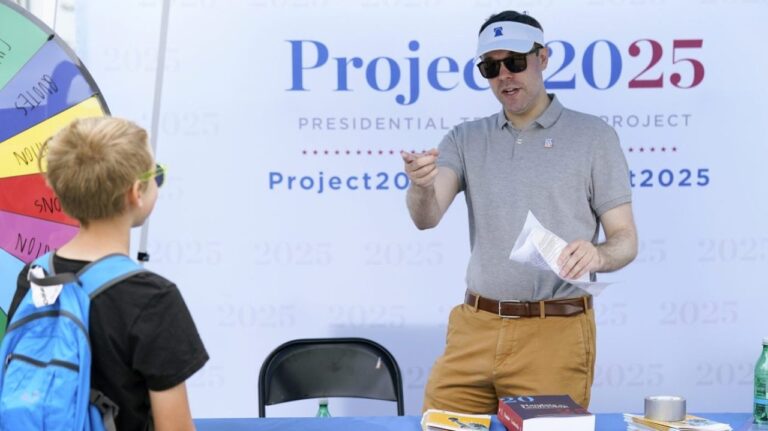In the lead-up to the 2024 election season, the political landscape is a heated battleground. Right from project proposals to policy agendas, the ongoing speculation and discussion have garnered substantial attention. Stuck in this political limbo is “Project 2025″, an initiative put forward by conservative think tank – The Heritage Foundation, which has initiated ripples of discourse among both the right-leaning conservatives, and the liberals.
Described as a ‘governing agenda’ by its proponents, Project 2025 serves as a blueprint for the presiding president to mend what they believe are damages inflicted upon America by the liberal reign. Critics, however, have portrayed the project as extremist, dubbing it ‘authoritarian’ and going as far as branding it as ‘dystopian.’ Amid this political tug-of-war, ample misinformation mires the true essence of the project affecting an objective assessment of its implications including allegations of the eradication of overtime pay for workers.
Countering these allegations, the project proposal on page 592 details recommended changes to the current overtime pay regulations. The Heritage Foundation has put forward several propositions under Project 2025, to rejuvenate the overtime pay structure. Among these are:
1) Establishing an overtime pay threshold appropriate for businesses operating in the less expensive provinces, particularly the southeastern United States. The threshold could be updated every five years using the Personal Consumption Expenditures (PCE) as an inflation adjustment tool.
2) Offering Clarification on regular rate calculation for overtime to be based on salary paid, excluding additional benefits, which allegedly provides flexibility to companies in managing their expenses.
3) Changing the frequency of overtime calculation from a weekly to a bi-weekly or monthly basis.
4) Addressing the issue of how current overtime legislation reportedly dissuades employers from offering fringe benefits and coming up with a balanced solution that does not compromise the rights of lower-income workers.
These propositions, while potentially providing more flexibility to employers, may also have the undesired outcome of impacting some workers’ overtime earnings negatively.
Liberal advocacy group, Democracy Forward, has issued their counter-report titled “The People’s Guide to Project 2025,” alleging that the initiative could inflict a loss on 4.3 million people in terms of overtime protection if implemented. Former Secretary of Labor, Robert Reich, has also criticized the proposed threshold, stating that it is far too low and will exclude a large number of workers from overtime benefits.
Besides its implications on the job market, Project 2025 also lays down an extensive plan for structural changes in various federal departments. These include the potential termination of 50,000 federal employees, dissolving agencies like the U.S. Department of Education, and significantly modifying the U.S. tax system.
In this political whirlpool, the Democratic National Committee, reframing former President Trump’s relationship with the Heritage Foundation, has incorporated Project 2025 into their media strategy. The DNC has held up the contributions of former Trump administration officials such as Ben Carson and Ken Cuccinelli, as evidence of the project’s troubling undercurrents.
In conclusion, the political dynamics have further complicated the trajectory of Project 2025. As the Democrats leverage the proposal for their campaign ammunition, Trump has rallied in defense, condemning any attempt to associate him directly with the Project as disinformation. This discordance will likely continue to be a contentious point for both sides as the race to 2024 march ahead.
